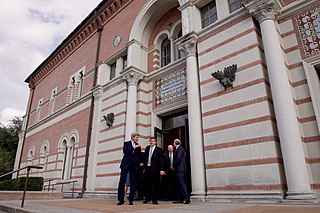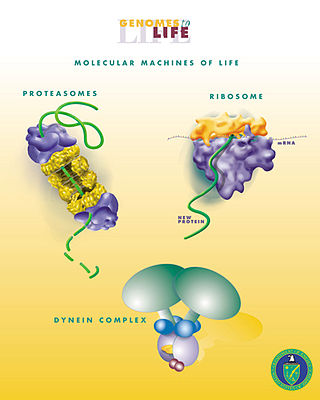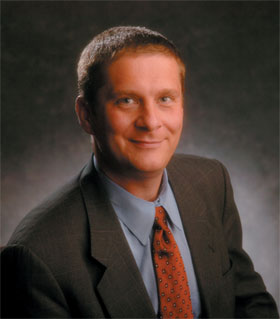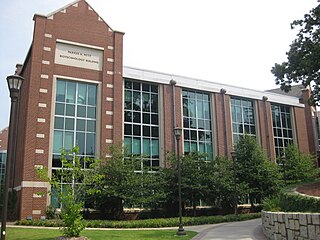
Rice University, formally William Marsh Rice University, is a private research university in Houston, Texas, United States. It sits on a 300-acre campus adjacent to the Houston Museum District and the Texas Medical Center.

The University of Texas MD Anderson Cancer Center is a comprehensive cancer center in Houston, Texas. It is the largest cancer center in the U.S. and one of the original three comprehensive cancer centers in the country. It is both a degree-granting academic institution and a cancer treatment and research center located at the Texas Medical Center in Houston, the largest medical center and life sciences destination in the world. It is affiliated with The University of Texas Health Science Center at Houston. MD Anderson Cancer Center has consistently ranked #1 among the best hospitals for cancer care and research in the U.S. and worldwide, and it has held the #1 position 19 times in the last 22 years on U.S. News & World Report's Best Hospitals rankings for cancer care. As of 2023, MD Anderson Cancer Center is home to the highest number of cancer clinical trials in the world and has received more NCI-funded projects than any other U.S. institute. In 2024, Newsweek placed MD Anderson at #1 in their annual list of the World's Best Specialized Hospitals in oncology.
The University of Texas Health Science Center at Houston (UTHealth) is a public academic health science center in Houston, Texas, United States. It was created in 1972 by The University of Texas System Board of Regents. It is located in the Texas Medical Center, the largest medical center in the world. It is composed of six schools: McGovern Medical School, The University of Texas MD Anderson Cancer Center UTHealth Graduate School of Biomedical Sciences, UTHealth School of Dentistry, Cizik School of Nursing, UTHealth School of Biomedical Informatics and UTHealth School of Public Health.
The Texas A&M Institute of Biosciences and Technology (IBT), a component of Texas A&M Health, and The Texas A&M University System, is located in the world's largest medical center, the Texas Medical Center, in Houston, Texas. The institute provides a bridge between Texas A&M University System scientists and other institutions' researchers working in the Texas Medical Center and the biomedical and biotechnology research community in Houston. It emphasizes collaboration between member scientists and others working in all the fields of the biosciences and biotechnology. IBT encourages its scientists to transfer discoveries made in their laboratories to the clinic and marketplace.

The University of Texas Health Science Center at San Antonio is a public academic health science center in San Antonio, Texas. It is part of the University of Texas System.

"Rice University's Baker Institute for Public Policy", also known as the "Baker Institute", is an American think tank housed on the campus of Rice University in Houston, Texas. Founded in 1993, it functions as a center for public policy research. It is named for James A. Baker, III, former United States Secretary of State, Secretary of the Treasury, and White House Chief of Staff. It is directed by Ambassador David M. Satterfield and funded mainly by donor contributions, endowments, and research grants.

The W. M. Keck Foundation is an American charitable foundation supporting scientific, engineering, and medical research in the United States. It was founded in 1954 by William Myron Keck, founder and president of Superior Oil Company. The Foundation's net assets exceeded $1.3 billion at the end of 2019.

Biological engineering or bioengineering is the application of principles of biology and the tools of engineering to create usable, tangible, economically viable products. Biological engineering employs knowledge and expertise from a number of pure and applied sciences, such as mass and heat transfer, kinetics, biocatalysts, biomechanics, bioinformatics, separation and purification processes, bioreactor design, surface science, fluid mechanics, thermodynamics, and polymer science. It is used in the design of medical devices, diagnostic equipment, biocompatible materials, renewable energy, ecological engineering, agricultural engineering, process engineering and catalysis, and other areas that improve the living standards of societies.

The California Institute for Quantitative Biosciences (QB3) is a nonprofit research and technology commercialization institute affiliated with three University of California campuses in the San Francisco Bay Area: Berkeley, San Francisco, and Santa Cruz. QB3's domain is the quantitative biosciences: areas of biology in which advances are chiefly made by scientists applying techniques from physics, chemistry, engineering, and computer science.

Anthony "Tony" Guiseppi-Elie is a Trinidad-born, American scientist, engineer, and entrepreneur. He is the President and Sr. Fellow of the American International Institute of Medical Sciences, Engineering and Innovation and the President and Scientific director of ABTECH Scientific, Inc. He is noted for his research and commercial development of biologically inspired and chemically responsive electroconductive hydrogels. Guiseppi-Elie is the Founding Editor-in-Chief of the transdisciplinary journal Bioengineering.
Bin He is a Chinese American biomedical engineering scientist. He is the Trustee Professor of the Department of Biomedical Engineering, professor by courtesy in the Department of Electrical and Computer Engineering, and Professor of Neuroscience Institute, and was the head of the department of Biomedical Engineering at Carnegie Mellon University. Prior, he was Distinguished McKnight University Professor of Biomedical Engineering and Medtronic-Bakken Endowed Chair for Engineering in Medicine at the University of Minnesota. He previously served as the director of the Institute for Engineering in Medicine and the Center for Neuroengineering at the University of Minnesota. He was the Editor in Chief of the IEEE Transactions on Biomedical Engineering and serves as the editor in chief of IEEE Reviews in Biomedical Engineering. He was the president of the IEEE Engineering in Medicine & Biology Society (EMBS) from 2009 to 2010 and chair of International Academy of Medical and Biological Engineering from 2018 to 2021.
The National Space Biomedical Research Institute (NSBRI) was a NASA-funded consortium of institutions studying the health risks related to long-duration spaceflight and developing solutions to reduce those risks. The NSBRI was founded in 1997 through a NASA Cooperative Agreement. The founding director was Laurence R. Young of MIT. NSBRI's 16,400-square-foot headquarters facility was located in the BioScience Research Collaborative in Houston, Texas. The Institute shared the facility with Baylor College of Medicine's Center for Space Medicine. The official opening was held March 19, 2012.
FKP Architects is an American architecture firm based in Houston, Texas. It specializes in the design of major academic, research, scientific, and healthcare projects. In 2017, FKP Architects merged with CannonDesign, a global architecture, engineering and planning firm.

Timothy J. Broderick, F.A.C.S., is Professor of Surgery and Biomedical Engineering at the University of Cincinnati, where he has served on the faculty since 2003. He also serves as Chief of the Division of Gastrointestinal and Endocrine Surgery and is Director of the Advanced Center for Telemedicine and Surgical Innovation (ACTSI). He has flown on the NASA KC-135 parabolic laboratory and dived in the NASA Extreme Environment Mission Operations (NEEMO) program to develop advanced surgical technologies for long duration space flight.
The IEEE Biomedical Engineering Award is a Technical Field Award of the IEEE given annually for outstanding contributions to the field of biomedical engineering. It was established in 2010.

The Parker H. Petit Institute for Bioengineering and Bioscience (IBB) is one of the ten interdisciplinary research institutes at the Georgia Institute of Technology. Established in 1995, the goal of the IBB has been to centralize and accelerate Georgia Tech's bio-research efforts. The IBB is a research center for members of the Georgia Research Alliance as well as non-member institutions such as the Morehouse School of Medicine. It also serves as the headquarters for over a dozen biomedical and bioengineering centers that conduct research in areas including pharmaceuticals, cancer, heart disease, infectious diseases, and diabetes, among others.
Rebecca Richards-Kortum is an American bioengineer and the Malcolm Gillis University Professor at Rice University. She is a professor in the departments of Bioengineering and Electrical and Computer Engineering, and she is the Director of Rice 360°: Institute for Global Health, and the Founder of Beyond Traditional Borders. She is the Director of the Institute of Biosciences and Bioengineering, and serves as the advisor to the Provost on health-related research.
Jennifer L. West is an American bioengineer. She is the current Dean of Engineering and Applied Science at the University of Virginia. She was the Fitzpatrick University Professor of Biomedical Engineering at Duke University from 2012-2021. In 2000, West cofounded Nanospectra Biosciences in Houston to develop a cancer therapy based on gold nanoparticles that destroy tumor cells and has been listed by MIT Technology Review as one of the 100 most innovative young scientists and engineers world wide.
Kathleen E. Cullen is an American–Canadian biomedical engineer and neuroscientist. She is known for her work combining computational and systems neuroscience to understand how the brain encodes and processes self-motion (vestibular) information to ensure the maintenance of balance and stable perception. Her research also focuses on extending this knowledge to further advance the development of novel diagnostic tools, treatments, training, and rehabilitative strategies for patients.











